|
Lake District
I missed skiing on the Volcano
From Temuco I moved on to Villarrica Lake, dominated by a volcano of the same name, where there is a ski resort. The terrain was nothing special, but I had never skied before on a volcano which was daily puffing from internal pressure. The mountain was crystal white, laden with snow, so I hoped my intention to ski would bear fruit. And in my mind's eye, I already projected to the time when I would deflate my skiing friends when they boasted about the places where they had skied. All I would need to say is: “Boys, but in Chile…” and that would be enough. Unfortunately, the unbelievable happened (to paraphrase Czech writer Hrabal) and the ski resort had already been closed for several days when I arrived. I am simply not lucky in the southern hemisphere – I missed New Zealand’s Wakapaka resort by about 14 days, Australia’s Snowy Mountains by one month and here by about ten days. Unfortunately there was no longer any chance to go skiing anywhere else in Chile.
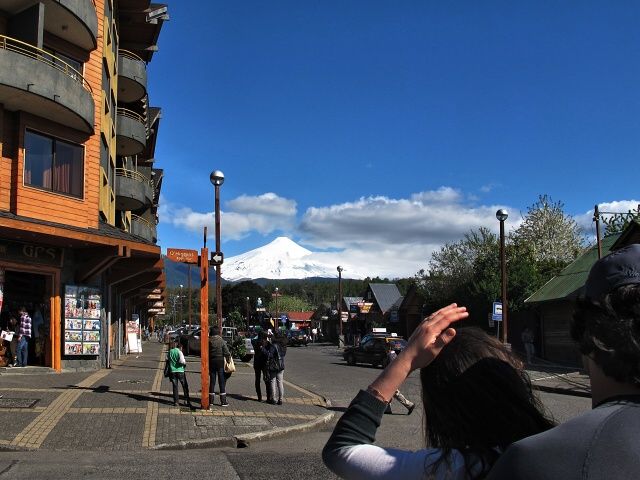
[Pucón] Villarrica volcano is rightfully in the limelight
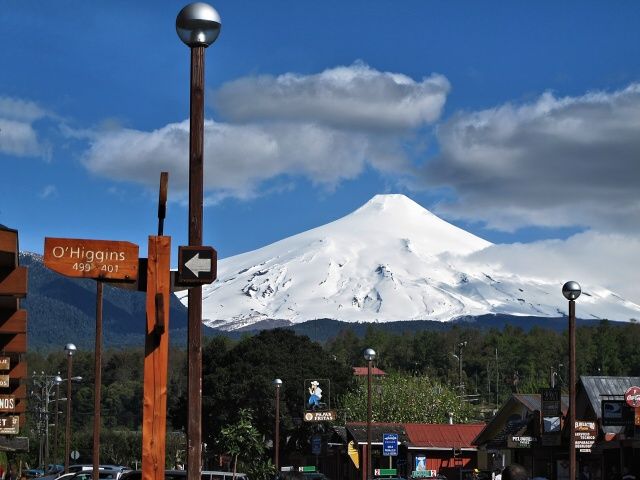
[Pucón] There is a ski resort on Villarrica Volcano; unfortunately 2 weeks before I arrived, the ski season ended
Pucón
Pucón is called Chile’s Queenstown because, like New Zealand’s city of the same name, it is the center of adrenalin sports. Climbing the smoking Villarrica Volcano, white-water rafting, boat trips on the lake, skiing, trips to surrounding lakes and waterfalls, renting of mountain bikes with numerous recommended routes and many other activities. It is also proportionately expensive, but I coped by sleeping in a campsite, where there was hot water, a large kitchen with a fireplace which the manager lit every night, and lockers for storing luggage which were supervised during the day and at night the whole complex was locked up. It was a seven-minute leisurely walk to the center of Pucón. There was also a good bunch of other campers – for example, there was a busload of Australian girls, students under the leadership of a university professor of Mathematics, appropriately nutty. I met him in the showers. We chatted about travel and I recounted a little of my Australian story. OK, 2 hours later the whole gang was at dinner. I was eating a side dish at the neighboring table when the Professor began to preach to his protégés – "There is a cyclist here who has been to Australia twice and even cycled on the Gibb River Road." I was already in a sentimental mood so I said, "Buddy, Professor, that was me, dude!" The girls began to laugh and quizzed me about the crossing of the crocodile-infested rivers. Well, I exaggerated a little and we had several good laughs. They were especially amused that I had carefully studied the warning signs about salties (salt-water crocodiles) and then had crossed the river five times – once by bike and twice with the bags. It was high tide, so it could not be done any other way. But before each wading, I reread the crocodile warning – and the girls were amused by this. I told them that if it was worth the government installing the signs, at least someone had to read them.
Easy Going in the Terrain
The next day I cycled to the couple of waterfalls, to Caburgua Lake and to soak in the Liucura thermal spa at the eponymous river. As always, I was surprised by the behavior of the bike without bags, it shook and did not hold the track. After 500 meters, I had come to grips with it. It was just a different way of cycling. However, a bike loaded with bags on the front and rear wheels is extremely stable, the center of gravity is low and the bike handles crazy shenanigans without hesitation. The waterfalls were beautiful, one from each side and the water flowing away in a single riverbed oriented at right angles to the waterfalls. Likewise, the lake was a magnificent sight. In the season both beaches, Blanca and Negra (white and black, according to the color of the sand) are packed with crowds. At that time, I was lucky that at least one store was open where I refreshed myself with delicious empanada.
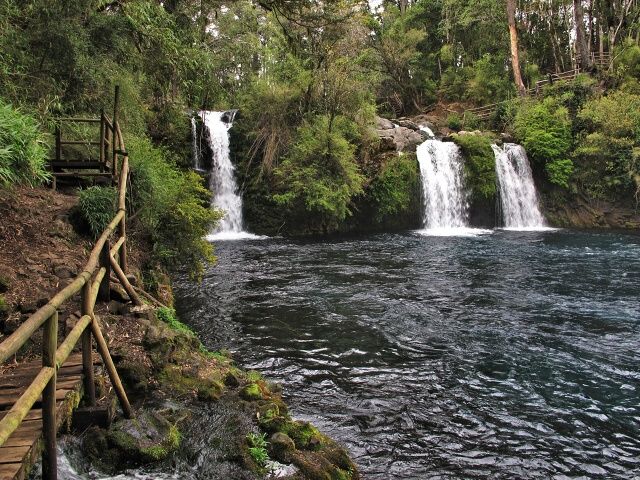
[Ojos del Caburgua] Two waterfalls opposite each another; this was the bigger one

[Ojos del Caburgua] The smaller one of the waterfalls
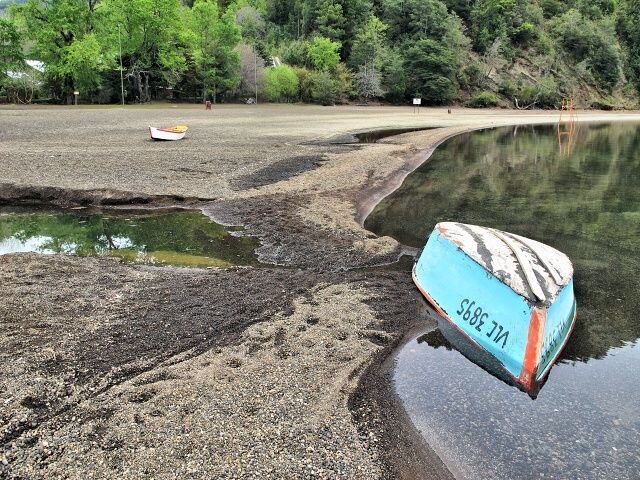
[Caburgua Lake] Playa Negra – a beach with black sand, long before the season
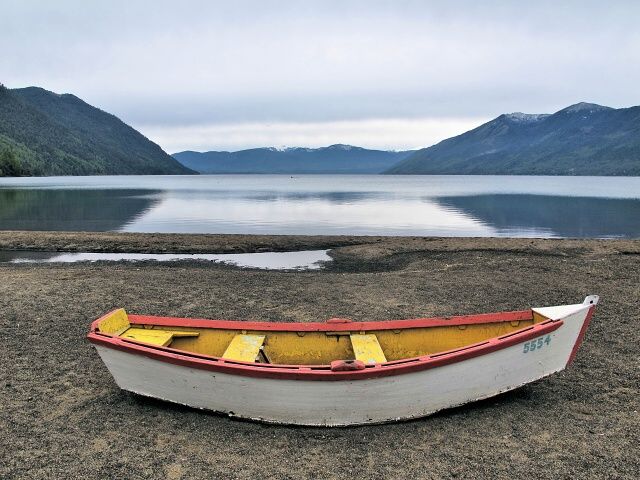
[Caburgua Lake] A view of the lake
Termas
Hot springs and spas built on them, their density in this region has no rival elsewhere in Chile. In the warm winter season, all outdoor swimming pools are open, but at the beginning of autumn not many are open. I tried Termas de Liucura about 10 km from the road. Only one small 4 x 6-meter swimming pool was open. The water temperature was 30 degrees which felt cold to me. But I splashed about happily and realized that cycling clothes would not go a single day without washing. There was a laundry room in Pucón, but permanently closed with a phone number of where to call in case of interest. I did my laundry in the camp. There was no hot water in the washbasins, so I turned on the shower and carried the hot water in my cooking pot from shower to basin (but of course I let the shower run between the trips). On that occasion I thought that, based on my experience, I could write a doctoral thesis on how the owners of campsites, hostels and hotels actually lose money by all the measures aimed to save water and energy. Simply, people in need will always help themselves, the bigger the bum and vagabond, the more inventive he is (I take that as a compliment).
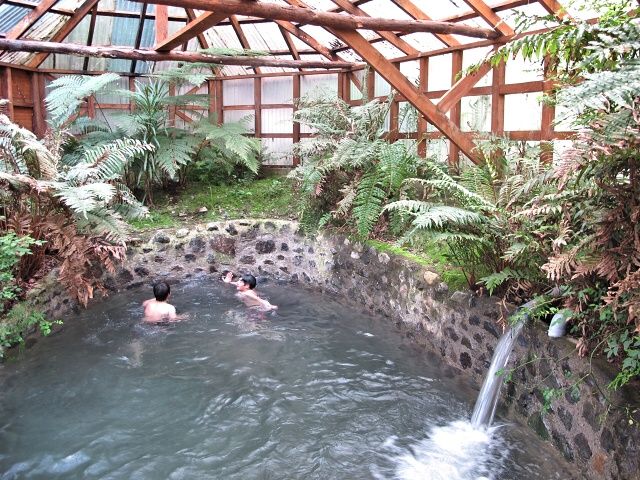
[Termas de Liucura] The only open warm-water pool (30° C); the outdoor pools were closed
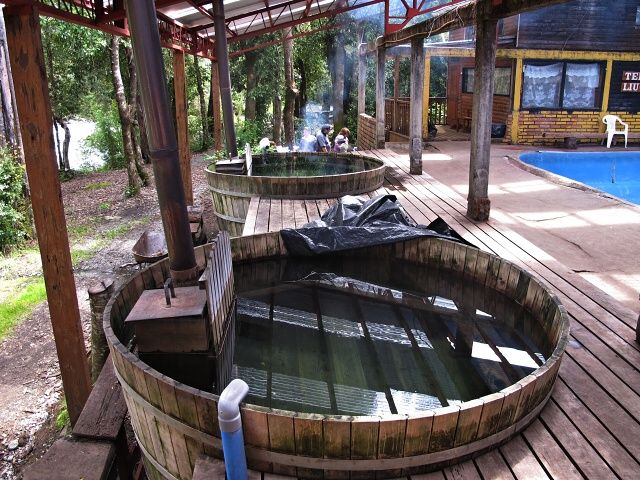
[Termas de Liucura] It is extra-hot in these tubs; 30 degrees is not very warm after all!
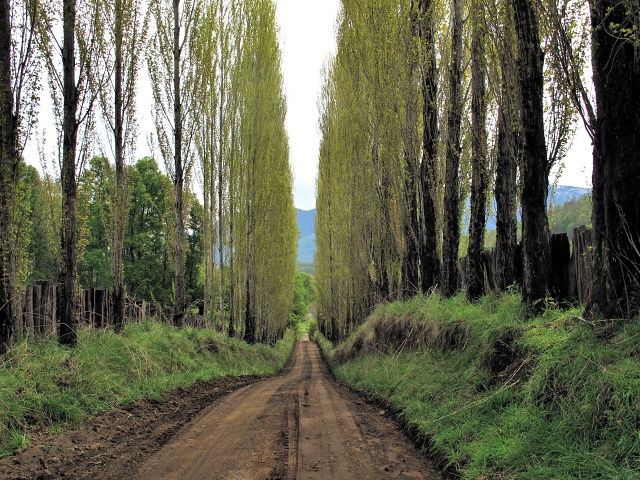
[Termas de Liucura] A dusty road towards hot springs
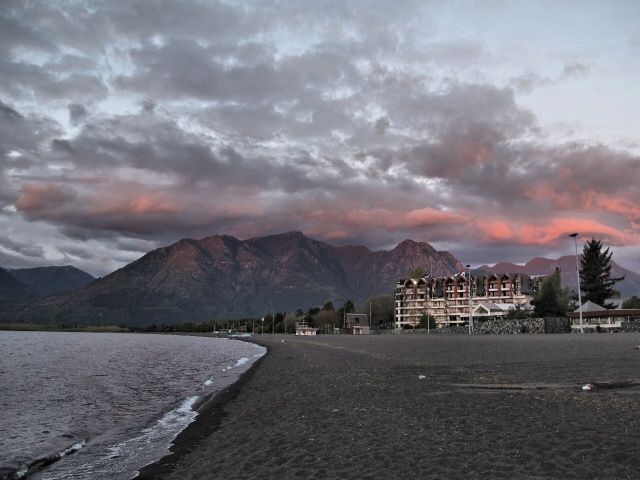
[Pucón] Twilight on Playa Grande; it is overcrowded in the season
My Way
From Púcon, all cyclists continue on to Argentina. But I just began to enjoy cycling in the countryside, so I thought that I would do some pioneer cycling. I would simply make my way somewhere long-distance cyclists do not usually go and once again I would be a number one. But especially, I wanted to get away from the road for a while and sweat in more difficult terrain through the trees. I came up with a route Pucón - Termas de Palguín - Coòaripe, which was tentatively indicated on the cycling map. In the morning I went to consult with the staff at the bike rental store who usually have the best information. And indeed, they called a girl, reportedly familiar with the area, who told me “Yeah, it’s very hilly, the road behind the Palguín spa is quite difficult, broken, steep climbing, but you will make it.” Well, shoot, who would not go there when thus bluntly evaluated by a nice girl, who definitely was no older than 25!
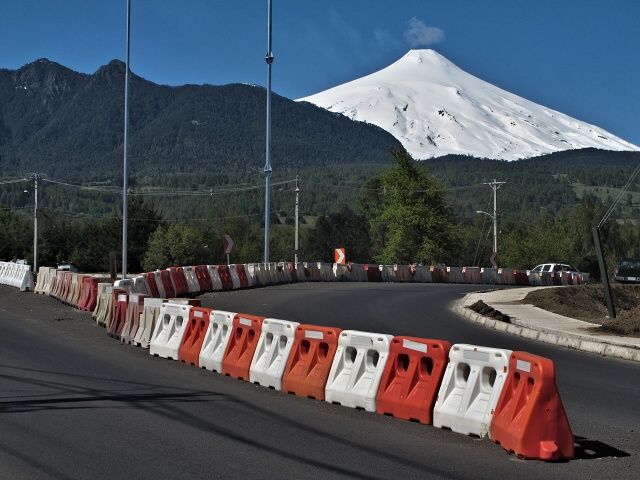
[Pucón] Villarrica Volcano 'puffs smoke' every now and then
Really Cool
The first day was amazing. The Palguín spa had an outdoor pool located in the greenery among the trees, bathed by the sun. The water temperature was 32 degrees - compared to the previous day’s 30 degrees, I had to say it was like chalk and cheese. 30 degrees is the temperature of the cooling bath, 32 is just hot enough for bathing. I spent the first two hours in the spa alone. At first, for almost an hour I swam in the outdoor pool and then went to warm myself up in the pool with 41 degrees warm potash water. There was even lithium, ferric and one other type of water which I cannot recall. The warmest water was 46 degrees, just right for a heart attack, so I skipped that one.
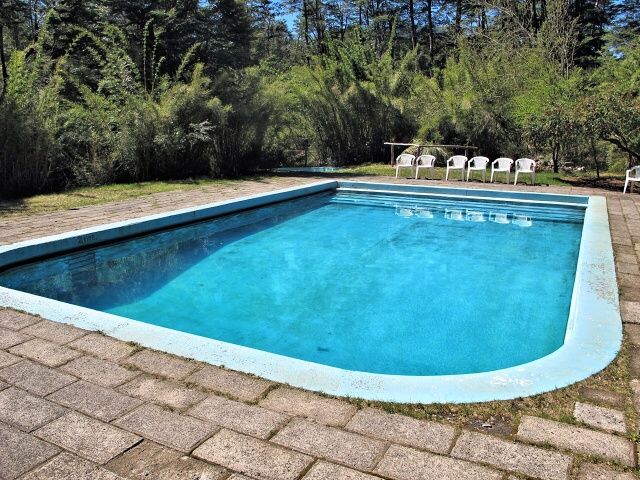
[Termas de Palguín] The temperature of the outdoor pool was 32 degrees and it was just great
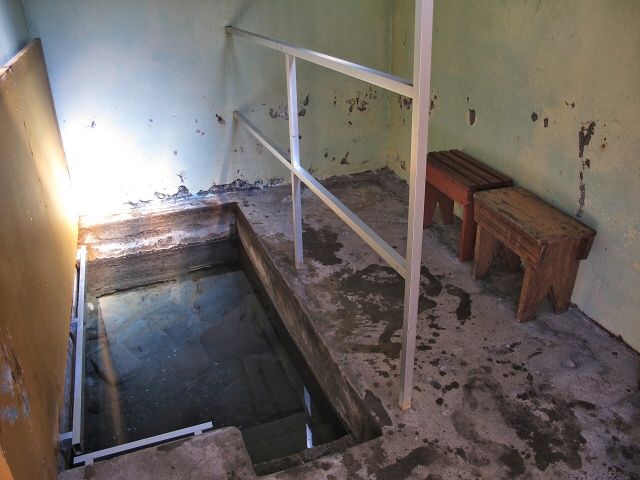
[Termas de Palguín] One of the "pozo"; temperature – 41°C, I heated myself up for the couple of days ahead
Then I went to a 2-km distant campsite near the Salto Le China waterfall, where I was, of course, the only visitor. I put up my tent on the green grass, persuaded the owner to cook dinner for me. (Perfect, but what really thrilled me was the home-made bread just fresh from the oven). I kindled the first fire on my journey without using any paper, and my camping teachers from my youth (Elstner, Seton and their books) would have been happy. I cleaned the whole area from obstructing branches and broken scattered furniture. The fire warmed my back, above my head the stars burned in the pitch-black sky, and the river, enlivened by the waterfall, gurgled nearby. Yeah, that was the life!
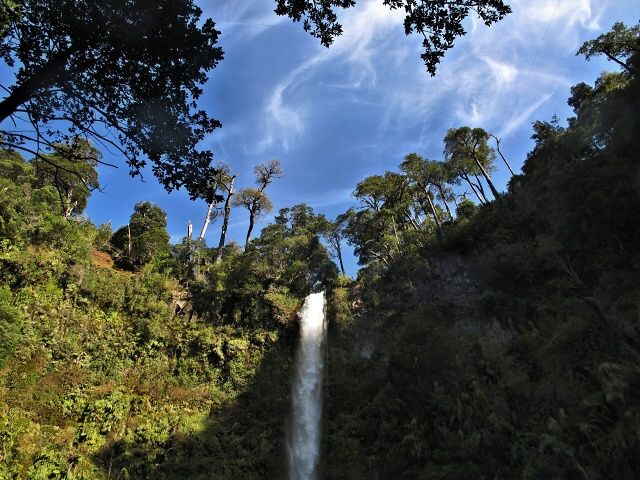
[Salto Le China] Amazing 60-meter high waterfall
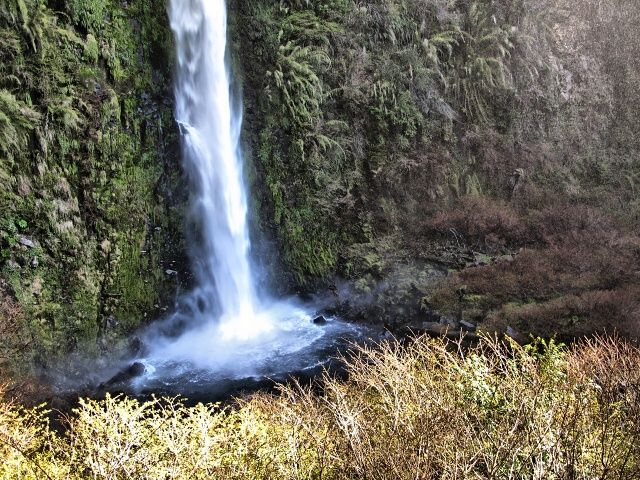
[Salto Le China] Lower part of the waterfall

[Salto Le China] Water spray fills surroundings of the waterfall
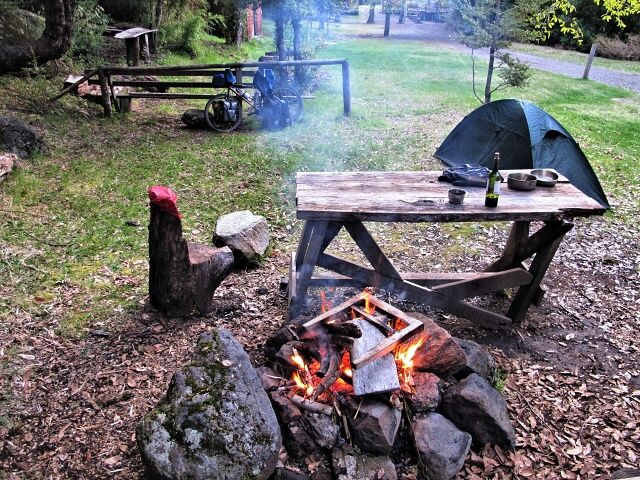
[Salto Le China] I finally made a fire in the camp and was over the moon; I also burnt the old furniture lying around; I hope the owner appreciated it
If I only had known, uh-oh
Full of enthusiasm I headed out from the campsite and the first kilometers were enjoyable. The road was steep - I accept, broken - I had been warned, partly impassable, OK. But 8 km of the route was covered in up to 50 to 100 cm of snow, which the young girl in the bike rental store had somehow forgotten to mention. So I thought it would be just for a short distance, otherwise she would have mentioned it. After 4 km of hard pushing through the snow, it no longer made any sense to turn back. Finally, it was nearly four hours in the snow, a full three hours of which I spent by unloading the bike and carrying the bike and bags separately in turn up the extreme hill. Simply, I enjoy the snow, but I desire snow for different activities. My greatest concern was to avoid injuring my legs in the snow, especially on steep descents when the bike or cargo weighed down heavily on my back.
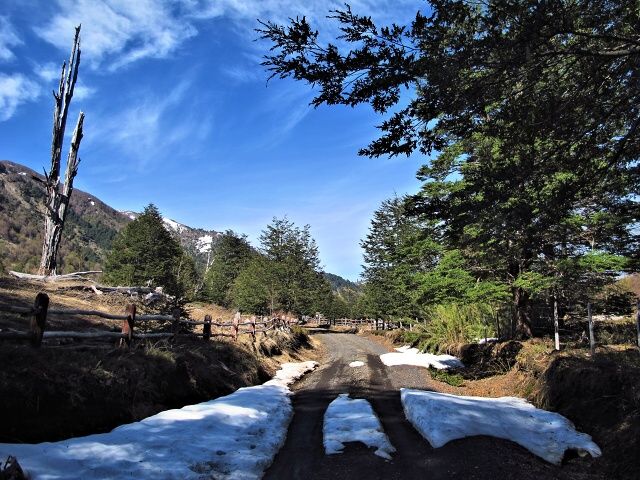
[NP Villarrica] The road was good at the beginning and the snow appeared just from time to time
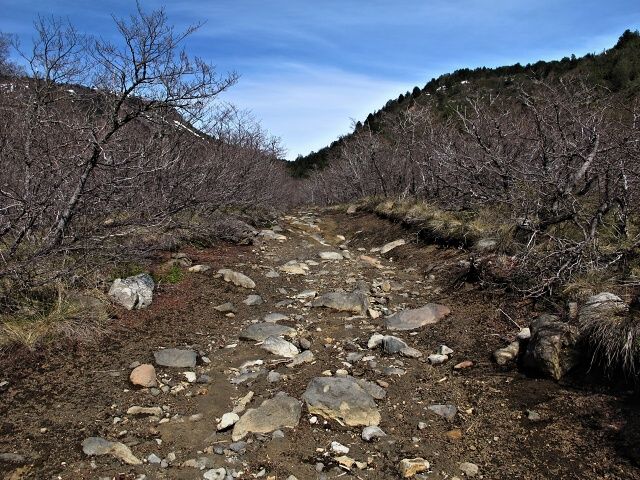
[NP Villarrica] I was ready for stones and hills
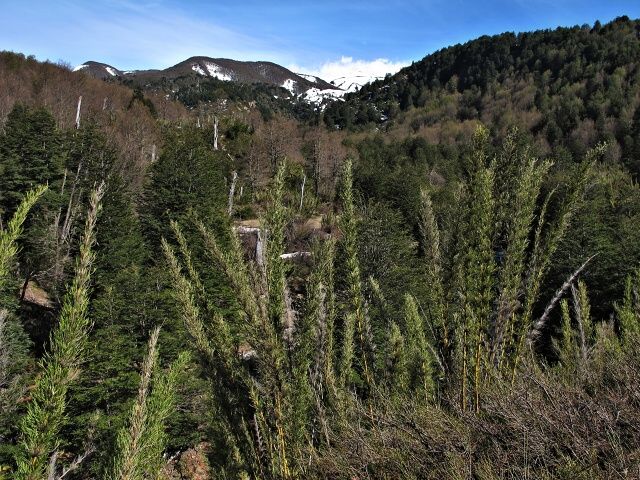
[NP Villarrica] I did not expect to have to crawl through the snow up to the saddle - seen in the right third of the photo
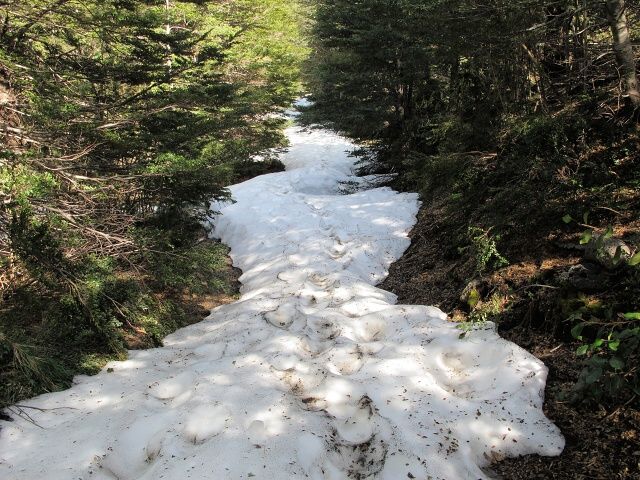
[NP Villarrica] Here the going got tough, but was still quite good
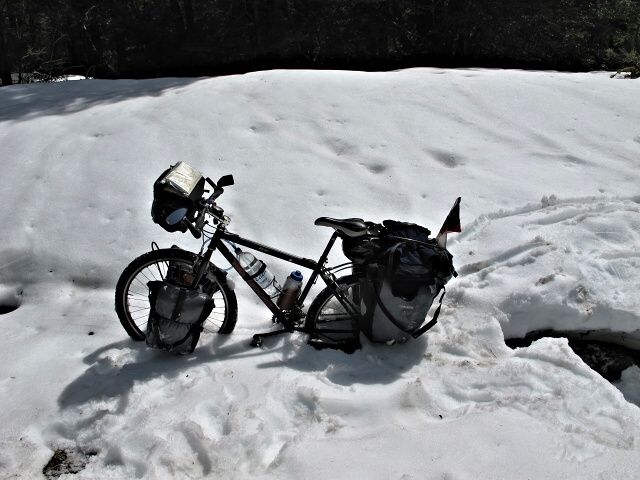
[NP Villarrica] Sometimes the bike sank in up to the “back axle”
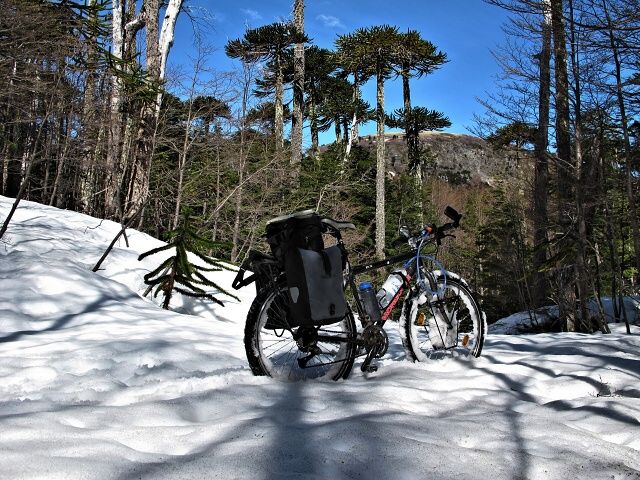
[NP Villarrica] In the mountain pass I knew it was half the battle – in one hour I would be on the hard surface
I successfully staggered out of the snow trap and, on a good dirt road, reached Coòaripe. At the first hospedaje I forgot to take off my helmet, goggles and scarf, so they classically were “full”. I did not repeat this mistake at the next one and they gave me a room on the ground floor so that I did not have to carry my bags far. On the following day, I cycled around Calafquén Lake on a gravel road of the type I hate. The bike can slip on the tiny as well as bigger stones, resulting in a bloody and consequently scarred face. So I cycled carefully, it was always up-down and I wondered whether I should not go on to Argentina after all. The harbor from which a ferry commuted almost to the border, was 55 km away. But in the end I kept to the original plan to cycle in the Chilean Lake District. It is always like this with me; I make fundamental decisions at the last moment.
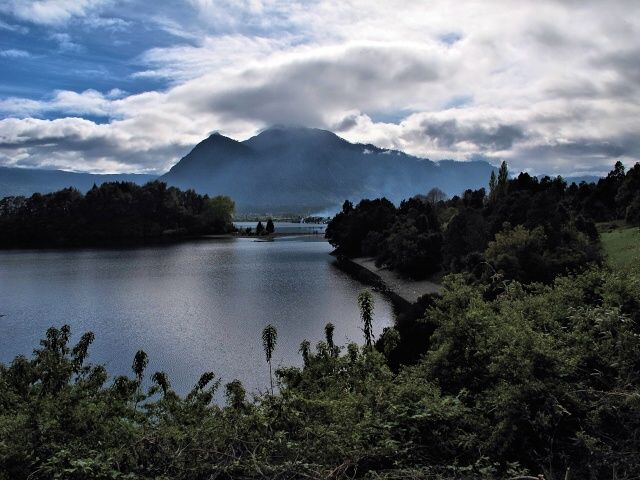
[Lago Calafquén] In the morning, I cycled around the lake; in the right third of the photo smoking "termas" are visible
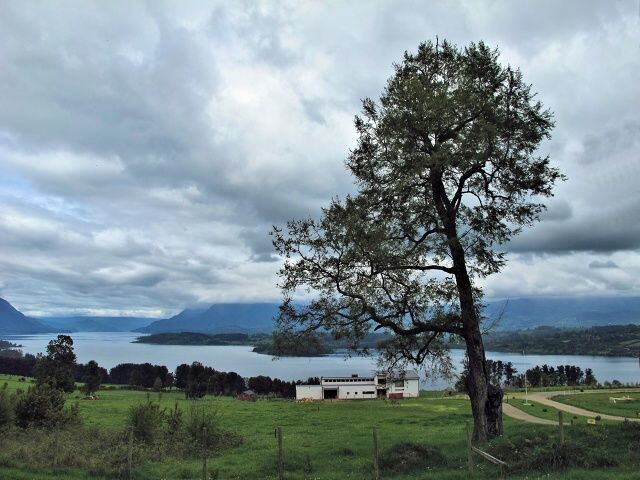
[Lago Panguipulli] Another of impressive lakes on my way
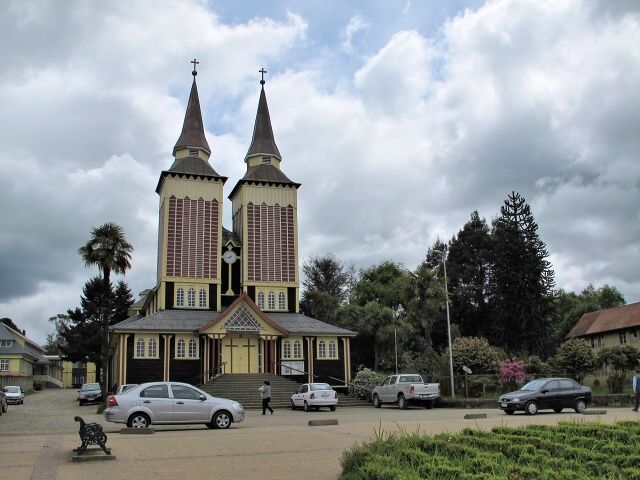
[Panguipulli] The Cathedral
I arrived in Los Lagos quite comfortably. I found accommodation in a pub in the center and wanted to have my hair cut. I chose a unisex hairdresser to avoid getting a blow-wave. Anyway, actually all the hairdressers were unisex, only some had up a sign “Damas, varones a niòos” (by the way, varones is pronounced barones, i.e. barons, lords). First, I confirmed several times that I wanted to have my head shaved clean and the owner himself, an active old man of about 80, took care of the task. I told him I wanted to use an electric shaver, so he selected the shortest cut. During the work we engaged in lively conversation. At our age, we omitted debating about women and focused on football, especially the last match of the national team which I had seen. In conclusion, I really stiffened when the old man took out a cut-throat razor, but with steady hand he perfectly polished my entire skull without hesitation. I gave him a good tip for such a performance. Then I proudly showed off my new look to the owner and waitress in the restaurant and even let them touch my velvety skull.
Humanism in Leninism
As the old man used the razor on me, I recalled a joke from totalitarianism which I like so much to this day, that I have to repeat it. At the Evening University of Marxism-Leninism (younger people can find out what this was about, I as a non-party man did not have to attend it) the lecturer explains to the audience the concept of “Humanism in Leninism”. The students do not understand and so the lecturer tries to explain the concept with an example from the life of Vladimir Ilyich Lenin:
“Lenin lived in exile at Ladoga Lake. In the morning, as he was shaving his beard, an eight-year-old boy came and annoyed him, saying he was hungry and asking V.I. Lenin to give him bread. Lenin told him to go away. On the second day while shaving, the same thing happened, only big V.I.L. got fed up and slapped the kid. Even shaving on the third day was not without the boy’s request for bread, so V.I.L. resolutely kicked him out as far as the nearby village. And there is the Humanism,” the lecturer adds.
One of the listeners puts up his hand to say that he still does not understand where the Humanism is, if Lenin did not even give any bread to the boy. The lecturer is confused. “How is it possible you still do not understand it, comrade? Realize that comrade Lenin was holding a razor in his hand, a few quick strokes would have sufficed to have slain the brat!”
The Importance of being Lucky
In the morning I left the pub where I had been staying, in a good mood , cycled to the 20-meter distant crossroads. There I fortunately had to wait for the green light and suddenly the pedals were turning loosely. It was clear to me that the hub was broken. For the ignorant, this is a gadget under the cartridge on the rear wheel, which takes care of two things - to transmit the rotation to the rear wheel and to secure freewheel, that is, for example to avoid the turning of the pedals when cycling downhill. From this two possible defects can result – freewheel does not work (the pedals never stop rotating and when cycling downhill it is best to lift the feet from the pedals) or the rear wheel does not react to pedaling and the bike thus becomes a stationary bicycle. The latter was my case - I could be pedaling for 5 minutes and the rear wheel would not move, or even half an hour and the wheel would not move, even half a day's pedaling would not turn the wheel a bit, I could pedal for a few days and the wheel would not turn the slightest bit (a memory of the brilliant comedian Felix Holcmann). And where was the good luck? The failure which I had no chance to fix (perhaps only by tape to attach the cartridge to the wires so that the pedals would work, but never stop turning), because this requires specialized tools (puller, whip for the cartridge, cone spanners), happened to me a full 30 meters from a bike workshop. It was shortly after 9 a.m. A young boy soon appeared, then a mechanic and probably the store owner, with whom I'd had a nice chat the night before. An hour later, the wheel was repaired. I meanwhile had changed the brake blocks, for which I had been building up the courage to do for several days. Oh, and for the hour of his labor he charged 5 USD. Cheap golden Chilean hands.
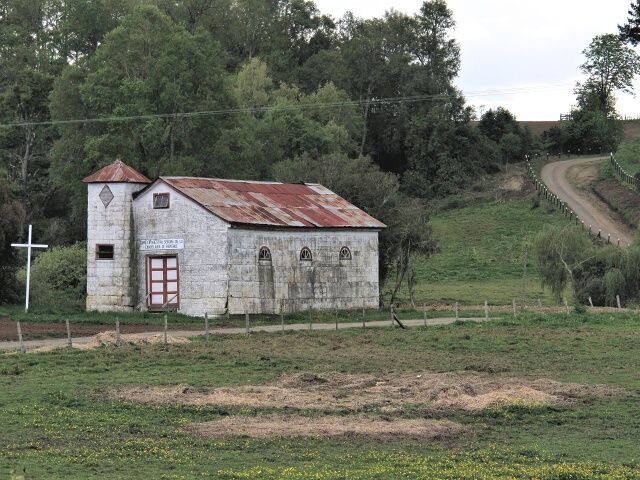
[Near Osorno] The village chapel
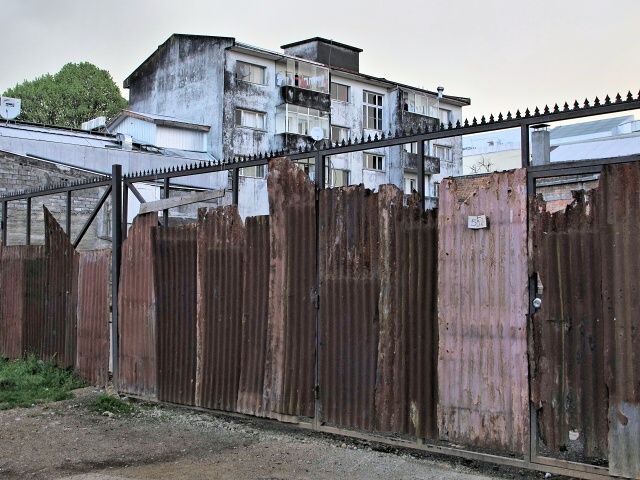
[Osorno] The center is not very exciting here (as in most Chilean towns and cities) –this was taken 100 meters from the center (don't complain about the Czech blocks of “panelák” flats!)
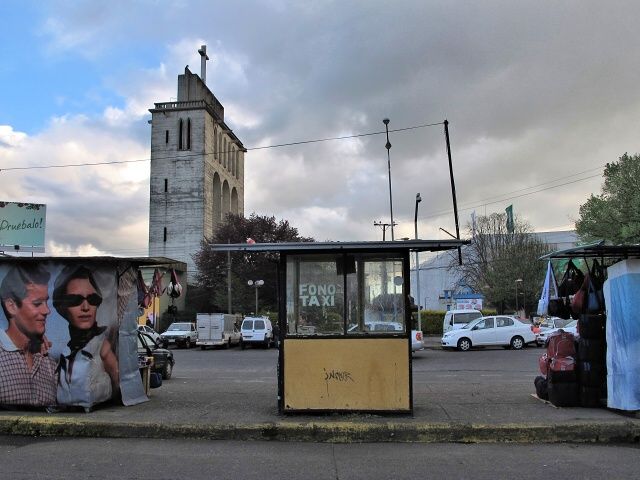
[Osorno] The centre of Osorno doesn´t attract anybody
Alas, it is Impossible to Avoid Planning!
I enjoy most of all those wanderings when I decide ad hoc on the spot (usually at an intersection), when I do not need to count the days or predict future developments. This I leave for the end of the trip, when I have to catch a plane. So far this had been possible, but to cross the Carretera Austral, I needed to sail to the Island of Chiloé and from there back to the mainland. The first crossing between Pargua and Chacao was short and the ferry sailed about eight times a day there. But the way back to the mainland was worse during off-season, which was my case. There was a ferry from Quellón to Chaiten just once a week. On the website of the shipping company I found a departure on 27th October at 24:00, which I perhaps understood correctly, but still had my doubts as to whether this was on the night of Thursday to Friday or the day before. If those morons had set a departure time for 23:59, it would have been clear to everyone and they could then have regularly delayed departure by a minute. So I counted the mileage from Puerto Montt to Quellón. 270 km should take me three days, which meant leaving from Pto. Montt on the Tuesday morning. I had to skip Lake Ranco, but to Puerto Varas via Lake Llanquihue the time schedule would be accomplished.
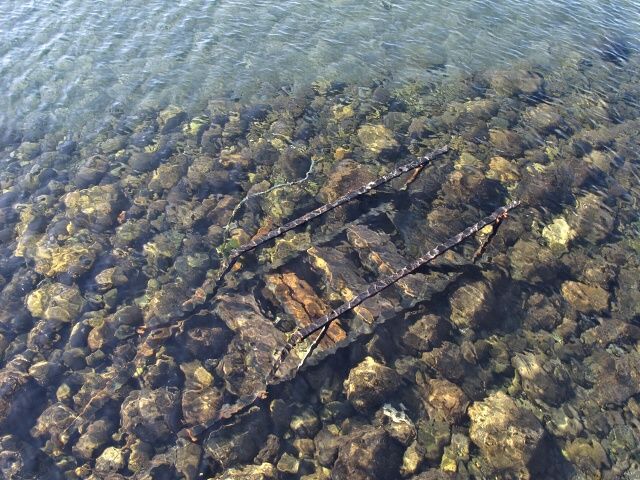
[Puerto Varas] The water of the Llanquihue lake is so clear that you can´t hide anything which falls in there
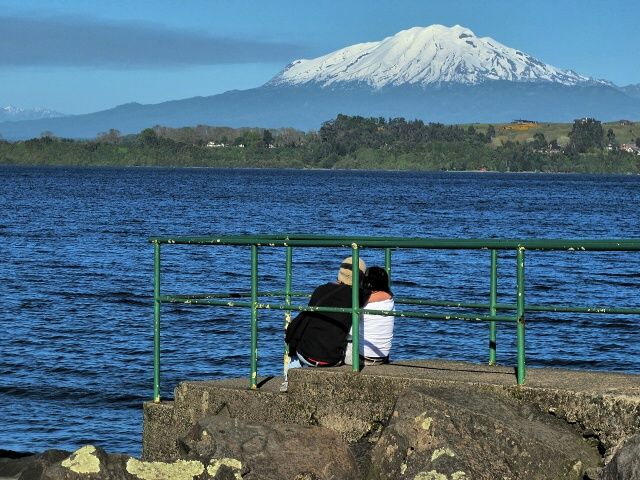
[Puerto Varas] The cone-shaped Osorno Volcano above the lake; and the Calbuco Volcano with more smoke
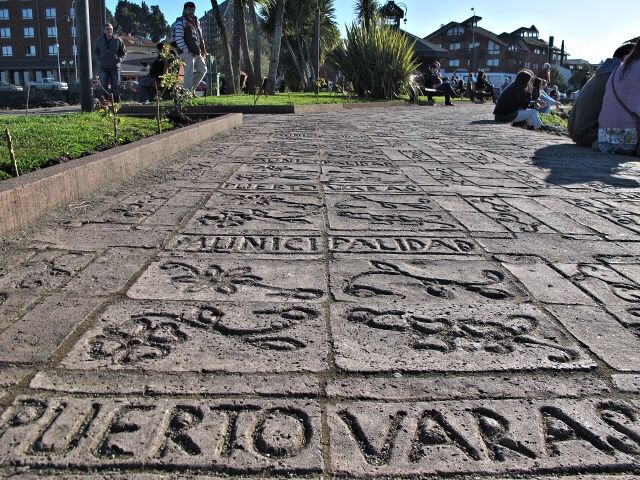
[Puerto Varas] The local pier is the tourist centre here
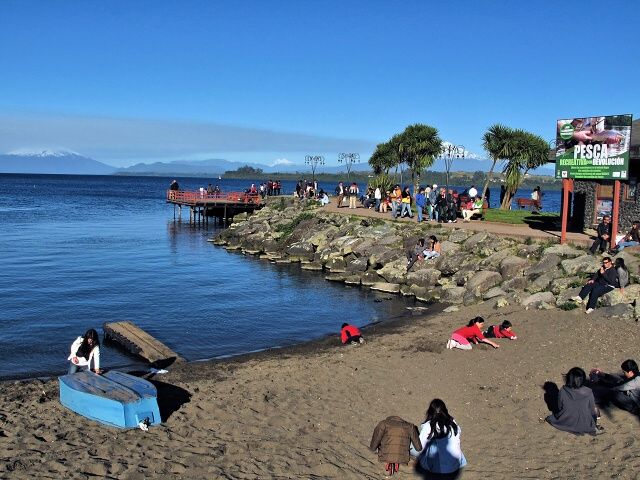
[Puerto Varas] There is a city beach with black sand next to the pier
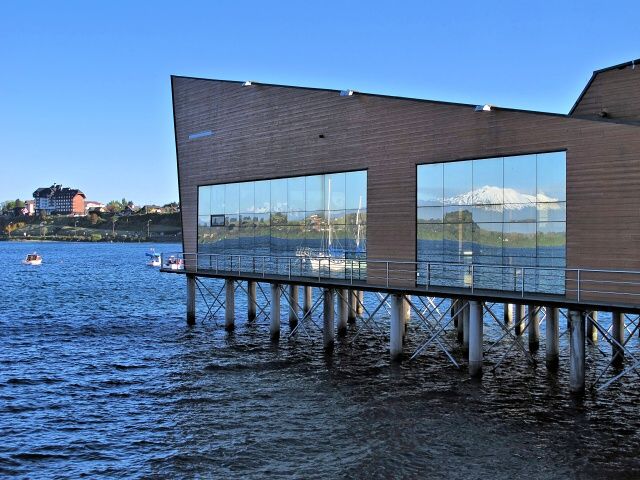
[Puerto Varas] A coastal restaurant reflects the main attractions: sailing boats and the Calbuco Volcano
In the Tourist Office they shocked me by confidently asserting that the ship sailed on 28th October on the Friday night to the Saturday morning. They even gave me the printed shipping timetable. I would have time to go to Ensenada. I asked them to verify that at the shipping company, but they could not get through on the phone. So I decided to trust the variant stated on the website of the shipping company and on the Sunday before noon left for Puerto Montt. I found good accommodation without a problem and checked in the local office of Naviera Austral. And stone the crows, it was even open on Sundays! I bought a seat ticket (they also offered a cabin with a bed for nearly twice the price) and a ticket for my bike (a total of less than 45 USD for six hours of sailing), and verified that Thursday 24:00 really meant midnight between Thursday and Friday – I had fortunately memorized the Spanish names of the days well.
On Sunday morning, the weather in Puerto Varas was bad, so I could proceed without remorse with the maintenance of the bike. On the previous evening I had brought cartons from the supermercado so as not to mess up the bathroom tiles. I just wanted to clean the chain with WD. But after measuring, it was clear that in the difficult terrain I had exerted superhuman strength and stretched out the chain after 2,500 km, so that it should have been replaced long ago. No problem, everything went well and the new chain was throwing shiny reflections in the distance. I washed everything thoroughly and got rid of the chain lubrication, which the frost in Bolivia had changed into a tool to dirty everything it touched (dust collector). Finally, I checked the pump, it produced more than 3 bars to each tire, so there was no reason to buy a new one.
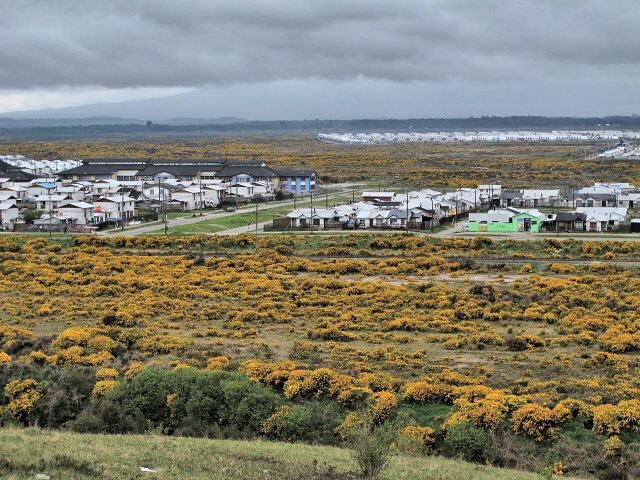
[Alerce] This town, 7 km from Puerto Montt, is surrounded by houses tightly packed together
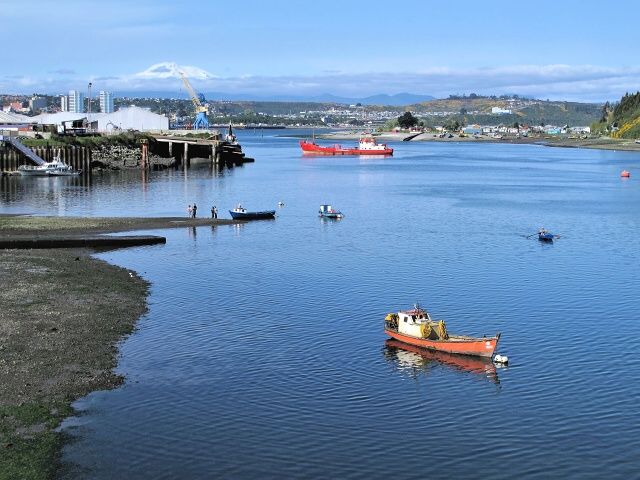
[Puerto Montt] A view of the center from Angelmo. In the top left of the photo: Calbuco which produces its own clouds

[Puerto Montt] Fishermen selling directly from the boat
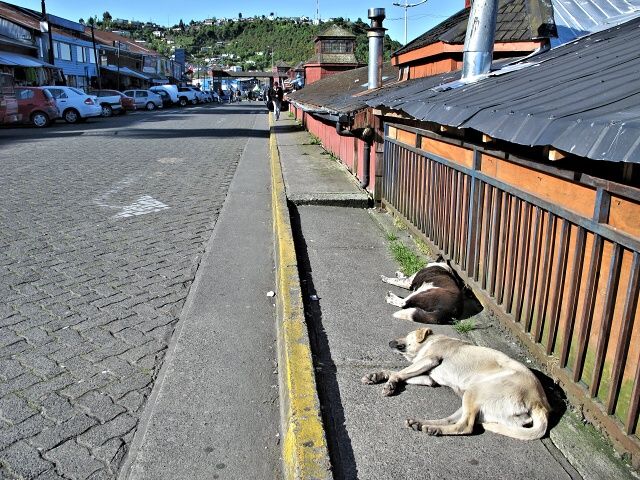
[Puerto Montt] Dogs laze around everywhere and don't seem to annoy anybody; you seldom see dog poohs on the sidewalks, as there is always a state employee to clean them up

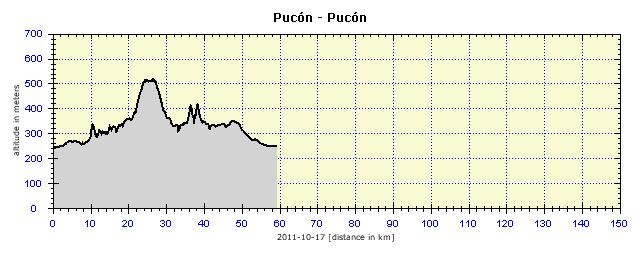
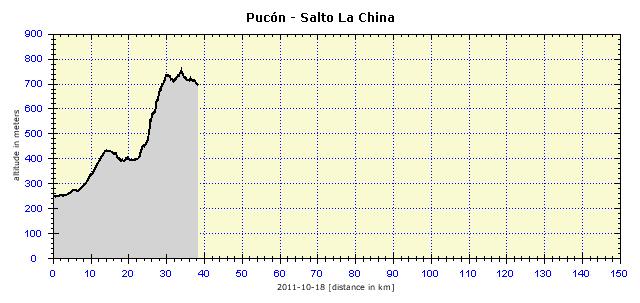





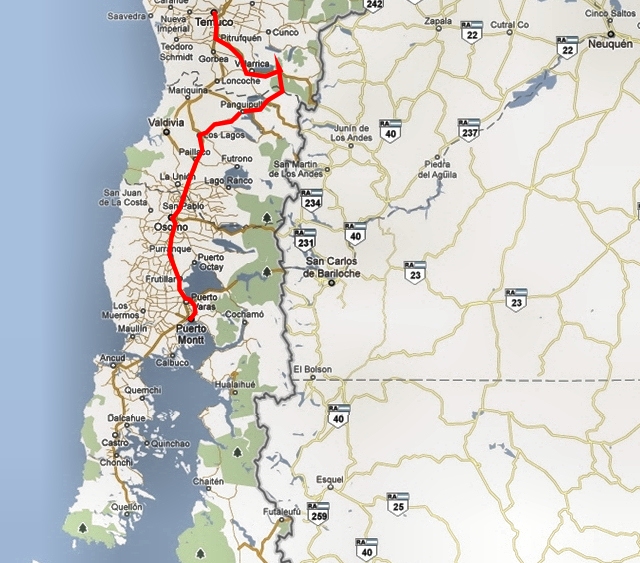
|






















































